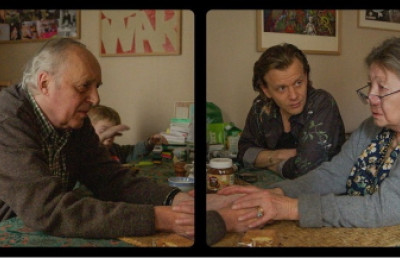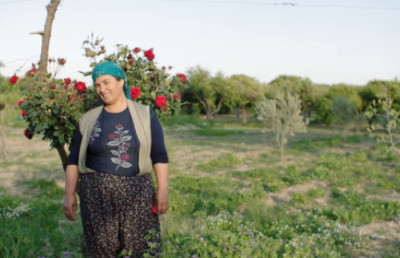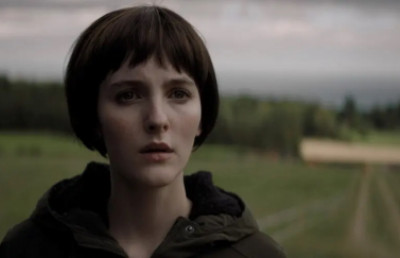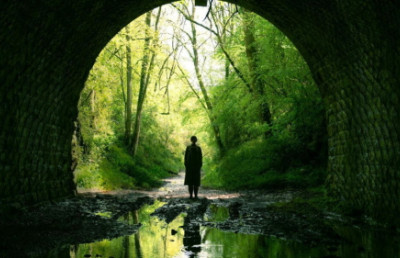FNC 2021: Experimental Film Selections
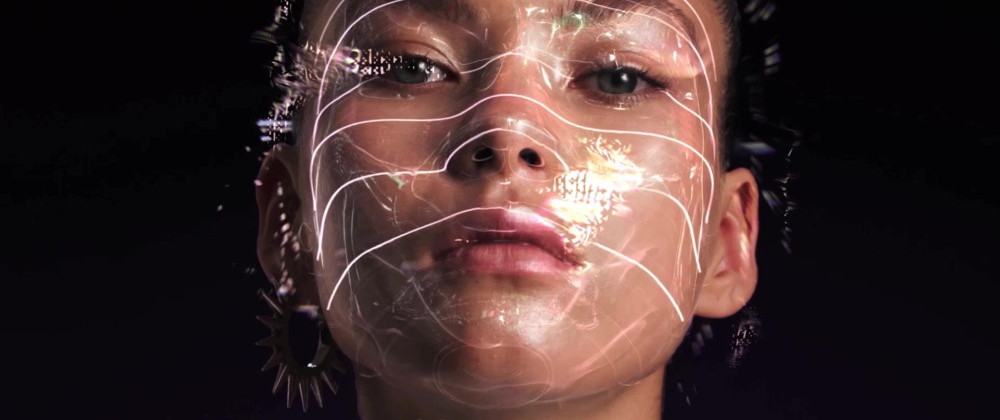
One of the things that has always made FNC a special festival is its ongoing support of experimental and avant-garde film. No other festival in Montreal has been as committed to this niche artform for as long as FNC has. The only place to see experimental films in the city is at museums and art galleries, special collective screenings (like Double Negative, Hors Champ, and la lumière collective) and in university film studies courses. It really is what sets FNC apart as a Montreal film festival (and its unabashed support of ‘auteur’ directors). For this year I would like to dedicate this first ‘post-pandemic’ ‘in the flesh’ report in a few years to some select experimental films that played on the big screen at FNC 2021.
‘Old School’ Works
This first grouping of films is by filmmakers who work in a style closer in spirit to the older tradition of the great experimental filmmakers of the past, people like Michael Snow, Stan Brakhage, Peter Kubelka, Bruce Baillie, Bruce Conner, Kurt Kren, Paul Sharits, and Joyce Wieland, whose works are concerned with questions of formal abstraction and cinematic materiality and are shot on 16mm or 35mm celluloid.
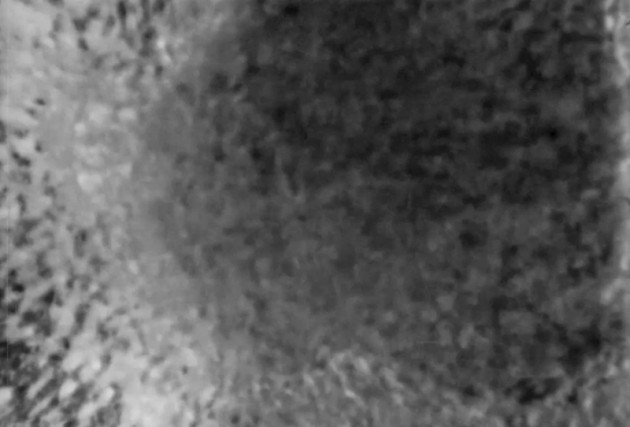
An Accumulation of Our Aftermaths
An Accumulation of Our Aftermaths (Solomon Nagler, 2021) is a 9 minute abstract black and white dialogue between image, poetic text and sound (ambient music and sound composition by Spencer Krug) to create what Nagler has called “light sculptures”. Nagler focuses his 16mm camera up close to rubble material and puts these dark and sometimes porous images in relief against title cards with poetic text set off against speckled white background. The end result feels like an extended stare into a microscope, a seductive, contemplative journey into form and texture.
Solomon Nagler is a product of the erstwhile Winnipeg Film Group of Canada and has been making impressive films, new media works and installations since 2010. Some of these other works can be seen on his artist webpage, here. http://www.cinemaofruins.com/
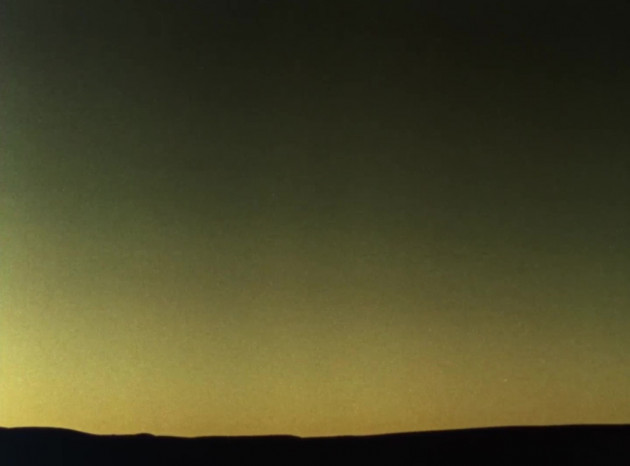
earthearthearth
EarthEarthEarth (Daïcho Saïto, 2021) is another epic scale experimental film from Saïto. This one is a less intense experience than Trees of Syntax, Leaves of Axis and has a more breathable aura to it, but it is still visceral and full of pulsating texture but pulsating at a more subdued level. In his previous film Saïto made trees the central subject, and for this follow-up he looks higher up to the mountains of the Andes and the clouds above. The film was shot on 35mm and in the original academy ratio of 1.33:1. For the first several minutes of its 29 minute runtime the viewer is unclear of what they are watching beyond the colors (orange, green black being dominant) but we soon begin to make out a mountainous landscape range with a rhythmic interchange between an horizon line and the center space of the image. The film has constant movement but very little from the camera, which is fixed on a tripod with a restrictive lens (telephoto). The sense of movement comes from the shifting colors, editing, the post-production work on the optical printer, contact printer and the film processing itself, which included solarization and the use of filters, importantly, the improvised bass saxophone score by Jason Sharp. The music (scored also with Sharp’s amplified breath and heartbeats) is as transfixing as the imagery, giving the film its rhythm and pace. The music helps us to feel the imagery. When the images become more restful so do does the music, making it hard to tell which is leading which. Improvised music by Jason Sharp is wonderfully fused to the tones and hues of the imagery. The colors are dominantly orange and blue and what we see are shots of nature. At times I think I saw Mount Fuji, other times mountains, the desert, the skyline, clouds. Production notes reveal that the film was shot in the Andes Mountain range in South America on the Chilean and Argentinean side over the course of about two weeks in 2015. Saïto’s films demands your attention and cannot be ignored. They are pure landscape films but a landscape that is at once literal –mountains, trees, skies, water, desert– but also figurative, allowing the viewer to imagine their own spaces within the spaces on the screen.
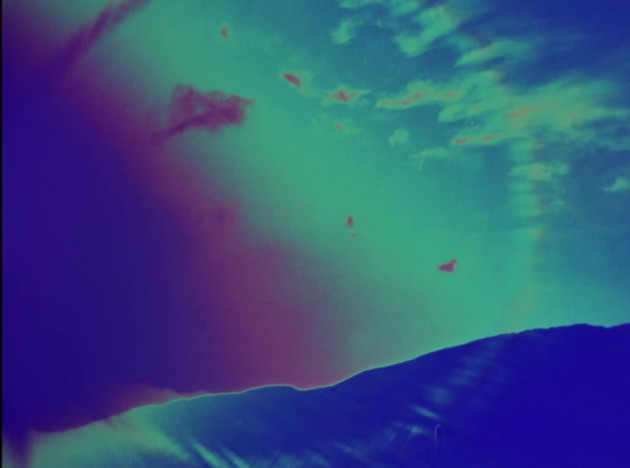
earthearthearth
Eidolon (Mike Rollo, 2020) is another landscape experimental film, by Regina-based filmmaker/teacher Mike Rollo. Rollo is along with Saïto a co-founder of the Montreal experimental film collective Double Negative, so their works are both informed by their shared experiences of having lived and passed through Montreal. Eidolon is also shot on film, 16mm, and at under 4 minutes is considerably less ambitious than earthearthearth, but still takes the viewer on a curious black & white journey of the natural world (gothic looking autumnal trees) filtered through ominous shadows, scratches and splintered visions layered over with indecipherable sounds.
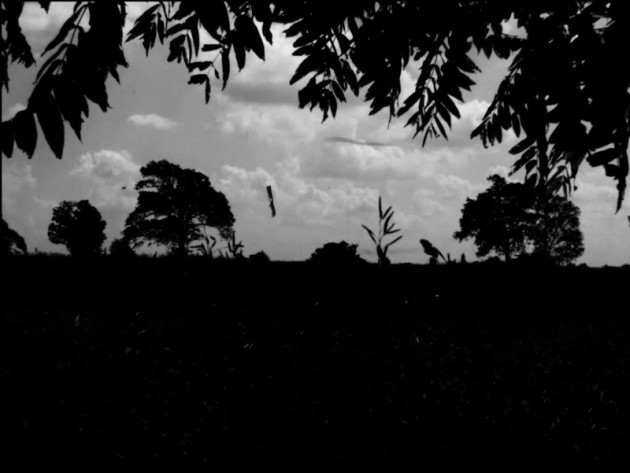
Eidolon
Perhaps my favorite experimental film at FNC this year was Peter Tscherkassky’s dense yet playful black & white found footage, partly flicker film, Train Again (2021), dedicated to the memory of the great Austrian structural master Kurt Kren (1929-1998). In some respects the film is also an homage to the ongoing love affair between cinema and trains, which goes back to the invention of cinema. Lynn Kirby writes about this in her book Parallel Tracks: The Railroad and Silent Cinema (1997), where she notes the invention of standard time in 1883 (which indirectly influenced the direction toward industry standardization that film studios took) to British film pioneer Albert Smith’s admission that he came up with the solution for the flickering film image when his view out a train window was being repeatedly interrupted by telegraph poles. Tscherkassky layers in many of the classic early train films into his flickering diorama such as L’Arrivee d’un train en gare de La Ciotat, The Great Train Robbery, and La Roue. And many others as well, such as The Workers Leaving the Factory, The Shining and many other films that were too obscured to identify. As are many train films aspiring to marry experimentation with history, Tscherkassky is influenced by Al Razutis’ seminal 1979 Lumière’s Train, Arriving at the Train Station. And some of the lateral train imagery mixed with train sounds recalls Bruce Baillie’s spellbinding Castro Street (1966). Tscherkassky performs a slight of the eye in an opening passage when he performs single frame cutting between a man riding a horse and a passing train which induces a flicker effect where it appears as if the horse and train are running along or over each other, a gesture which I would not be surprised was Tscherkassky’s homage to the famous Alex Colville painting “Horse and Train” (1954) which pits a horse in the foreground running along the train tracks toward an oncoming train, a perfect visual signifier for encroaching modernity. In a similar gesture, he single frame edits images of train tracks with images of film sprockets: parallel tracks indeed. The spectator is not left out of Tscherkassky’s historical purview as he includes many shots of people seated in a movie theatre watching the screen.
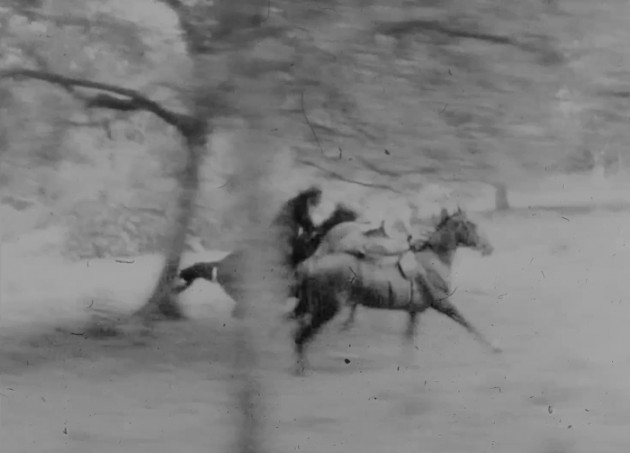
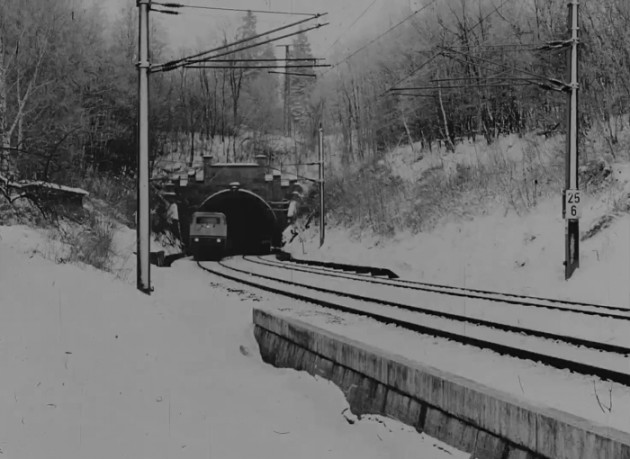
Train Again
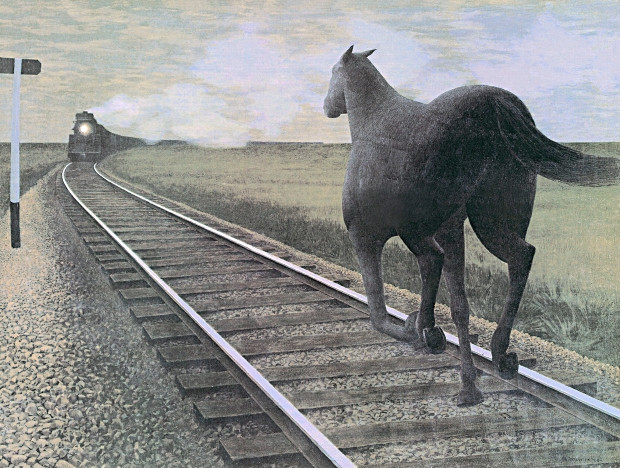
Alex Colville, Horse and Train, 1954
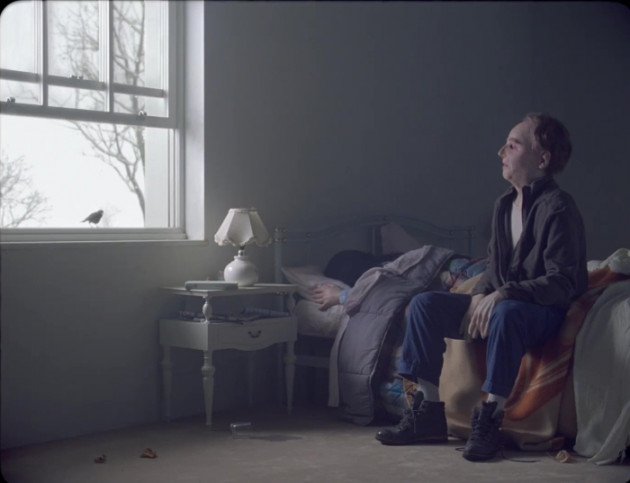
The Parent’s Room
The Parent’s Room (Italy, Diego Marcon, 2021, 10 min) is an odd, unsettling short film that blends animation with human compositing. It was shot on 35mm and then transferred to digital for the considerable postproduction work. It is an Italian film but the lyrics are sung in English. The film’s website describes the simple plot as such: “In a bedroom, perched on the edge of an unmade bed, a man looks out a window at the falling snow. A blackbird settles on the windowsill and strikes up a melody. The man begins to sing the murders of his wife and two little children as well as his own suicide. One by one, his son and daughter appear, and his wife turns, each singing a verse of their own.” The style is pure uncanny valley in the way the figures appear human in their form and facial figures (eyes, mouth) but are clearly made up in heavy prosthetics that give them a grotesque appearance. The animated film that came to mind was the Canadian short Madame Titli-Putli (Chris Lavis, Maciek Szczerbowski, 2007), which featured animated puppets and a technique created by portrait artist Jason Walker of compositing human eyes to the puppets. The camera never moves and the titular room is a highly stylized set designed in a uniformly dull, muted color pattern which reminded me of the monochromatic visual style of Roy Andersson. The song is slow and languid. Each character sings their own verse in a sad, plaintive voice. The middle singing section is bookended by long silences interrupted by bird sounds. The content is horrifying: a man has murdered his family and then committed suicide; but the restful form leaves the viewer feeling wholly unsettled.
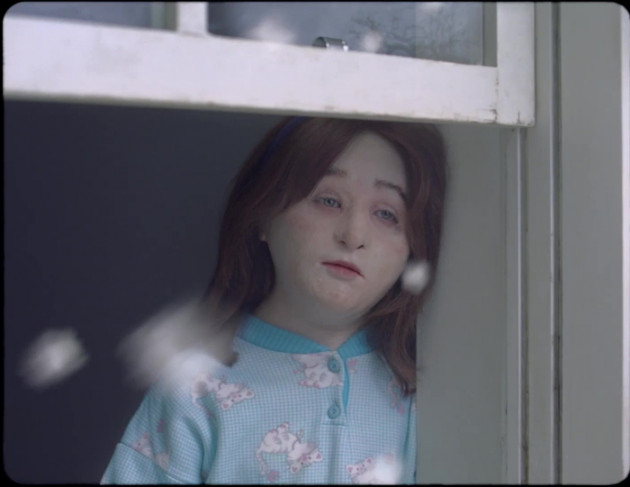
The Parent’s Room
‘New Works’: Digital Experiments
This second grouping of films is by filmmakers who are working primarily in digital sphere, either live action or animation.
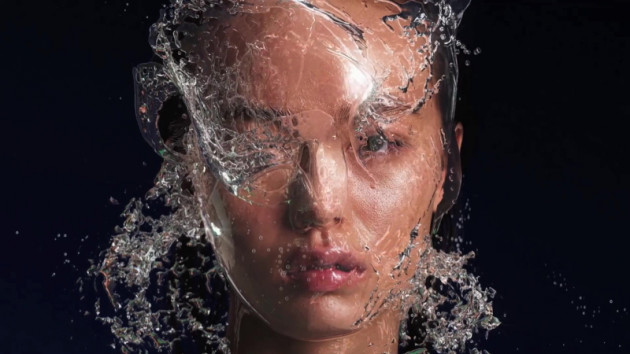
Skinned, with the ‘digital second skin’
Skinned (Canada, 2021) is Mike Hoolbloom’s nine minute COVID-19 inspired dystopia, where a “virus with a number” (the virus is never named) has taken down the internet and people must re-learn living without all that the internet has become. With generations of people reared on the internet, how will people cope without the internet? If you wake up tomorrow and all your devices are no longer connected to the digital highway, what would you do? Visually the film is quite simple yet impactful: a series of diverse looking young women (all beautiful) are filmed in full face close-up against a black background. Each woman is shot in extreme slow motion, their faces obscured to varying degree by “their second skin, a digital skin.” This ‘digital skin’ is represented through translucent layers of substance (like a sticky glue, one woman says), neck collars, or mercury like facial formations. In voice-over we hear each woman talk about how they will cope, what they have lost, and how they must “learn to look at each other again.” In nine minutes Hoolbloom is able to evoke so much with so little, to comment on the powerful inroads the internet has made in the lives of so many people. Can there be a more dystopian thought than a world without the internet?
I got to look good for the apocalypse (Ayçe Kartal, 2021, Turkey, 5 min) is one of the more interesting COVID-19 inspired digital animated films I’ve seen. The film alternates between VR styles footage and painterly rotoscoped footage with dialogue taken from different people’s COVID experiences. The title refers to a COVID-19 influenced scenario where people fight over everyday items, like toilet paper. In one of the VR scenes set in a grocery store where a first person shooter rages on after toilet paper, the man asks a woman why she is stealing mascara, to which her response forms the film’s title, “I got to look good for the apocalypse.” At the end the film reveals “the dialogue and animated paintings of this film reproduce content found online” and the “VR sequences from the internet”, which makes this partially a found footage film, partly a desktop film.
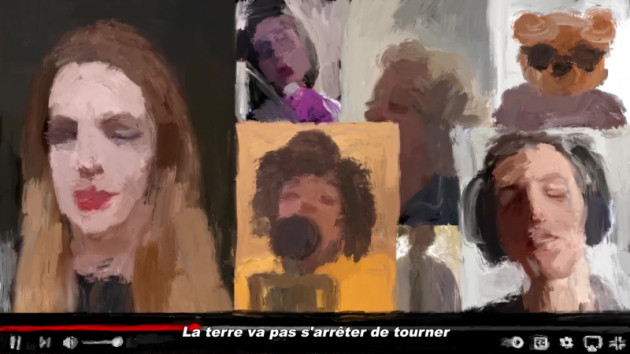
I got to look good for the apocalypse
The next two films I will discuss as a pair in that they both attempt to guide the viewer to a place of calm, a cinematic oasis of relaxation and tranquility. They achieve this using quite different means, La Vie Heureuse a live action and Sunset Special a computer animation short. In the case of the former this search is literal in that this is the content of the film, whereas in Sunset Special, it is less by design than by experiential outcome.
La Vie Heureuse (Happy Life) (2021, 17 min, Amélie Hardy, Canada) is a largely contemplative exploration of how people continually thrive from the search for living an “authentic life”. It feels partly like a film that grows out of the pandemic, because this was a time when people’s normal ways of searching for release, relaxation, comfort and purpose was put on hold. The film begins with a flurry of loud, ugly and mainly internet sourced images that function to put the viewer in an agitated state, before the tone breaks with a cut to a close-up of a hand placing an audio tape into a small tape player. A soothing male voice, one ‘John Smith’ (a name so bland so as not to move us at all) instructs us that he will now guide us on a search for calm, for our inner peace, our “authentic life”. What we are served with are a blend of scenes of people exploring various ways of letting out steam or unwinding: a heavy metal concert, a sauna, a swimming pool, a nudist colony, a virtual reality experience, bungee jumping, the final one being a young man enjoying George Fok’s Installation piece, Seeking Stillness (2018). What triggers the search for a tranquil space is the use of slow motion, John Smith’s super calming voice-over and the ambient music overlaying many of the scenes. All of the depicted activities were ones stopped or curtailed during the pandemic. But with restrictions removed we can return to trying to search for that one activity that takes us to our calm place. We certainly all deserve it.
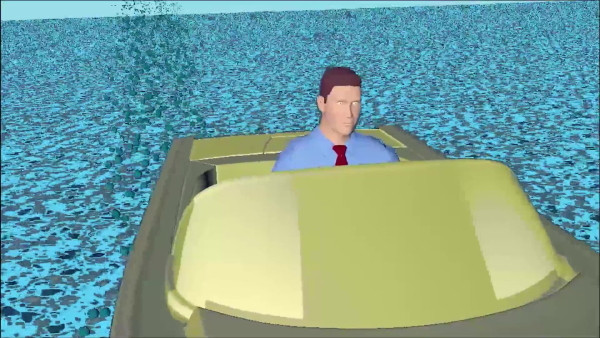

Sunset Special
The Sunset Special (Nicolas Gebbe, Germany, 2021) is part of a larger experimental multimedia concept by German multi-media artist Nicolas Gebbe (www.thesunsetspecial.de). On its own it is still an effective and disarmingly emotional computer generated animated film. It is game-like in its structure, a man meets a woman at a luxurious vacation resort and they spend time together as they tour the island resort, enjoying and remarking on its many comforts. The characters speak in voicebot in a very formal manner, spilling platitudes and niceties as the man accompanies the woman who is looking for her daughter. The choice of royalty free Bensound music manages to offset the pedestrian dialogue and layer it with an undercurrent of existential weight. Is life really just the sum of all these luxuries? Shortly after finding the young daughter at the theme park the tone of the film changes. At about the ten minute mark we lose the man and woman for an extended abstract passage where we see the resort broken down into swirling colors, cubistic forms and shards of light. The camera moves forward into the island itself, which takes the form of a colorful underwater grotto.
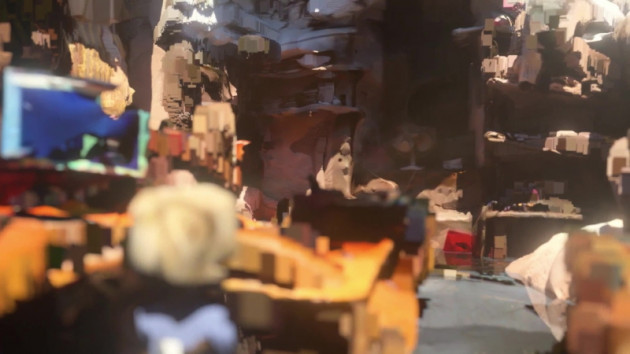
Sunset Special
The synth music envelopes the colorful imagery. After a barrage of blocky computer generated distortion, the film returns to the man and woman who make their way to the island shoreline to watch the sunset and repeat continuously over the closing credits (the hotel and boat images were found footage from Youtube):
Man: “Look at the horizon. The beautiful sunset.”
Woman: “I like those.”
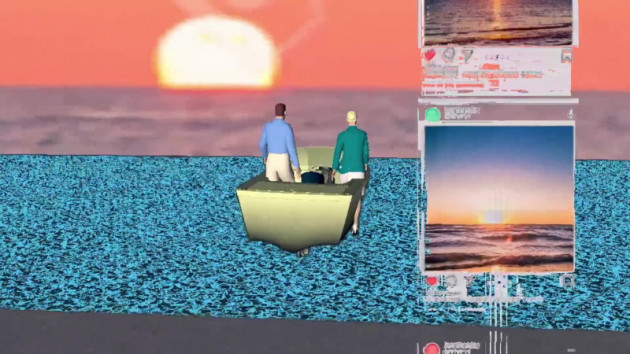
Sunset Special
And then there was….
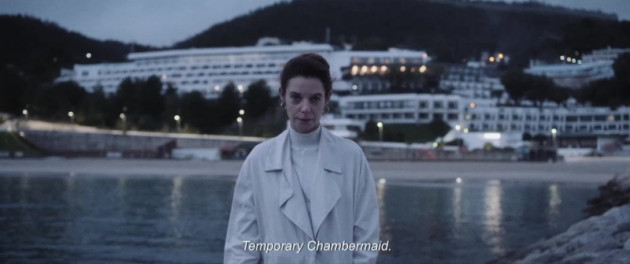
Hotel Royale
Hotel Royale (2021, Salomé Lamas, Portugal) is a film which does not fit in easily into my experimental coverage because it is not abstract as the others; but it is difficult to categorize into any other genre as it has elements of documentary, narrative and experimental. Though it is 100% representational and has a subject –the daily routine of a hotel chambermaid—it is the rigid structure which makes it unique and bordering on the experimental in the way it borrows elements from what experimental guru P.A. Sitney defined in his seminal book Visionary Film: The American Avant-Garde: 1943-2000. Sitney identified four key characteristics of films he was seeing made largely in New York and other North American Cities as 1) a fixed or static camera, usually on a tripod 2) Rephotography (usually through an optical printer), 3) the flicker effect, and 4) looping. He called films that were using one or more of these techniques ‘Structural Film’ because the nature (or subject) of these films were rigidly predetermined by their form and structure.
Although Hotel Royale does not utilize these traits in quite the same way, a few of them, notably the fixed camera and looping, do appear in modified ways. The film begins with a woman standing across a river with the cityscape in the background, identified as a “second floor chambermaid” who works in the hotel seen in the background, the titular Hotel Royale. She is not named. The voice-over is objective and female. We then cut to the interior of the said hotel, with the first of many intertitles that explain the scene, ”Interior Hotel/Corridor 1-Day”. The wide angle lens, used throughout the film to render slight distortion and expansion of the spaces, frames a long corridor. The maid walks out of a room on the left, the door magically shuts itself and she begins to walk down the corridor, as the camera tracks her from behind. Immediately the long corridor with dark carpet recalls The Shining and the experimental classic by Standish Lawder, Corridor.
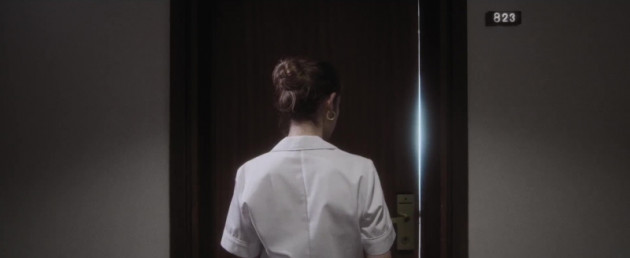
Hotel Royale
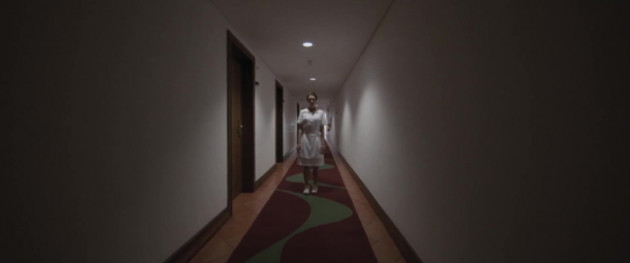
The maid never speaks, while her actions are explained in voice-over. As she gets to the room she needs to clean the camera frames her with the door number visible as she places the key card into the slot and opens the door. The voice-over tells us what we see: “Insert. There’s a key on a lock with the room number.” We see the number coded first by the floor ‘8’ then ‘23’, 823. The voice-over continues, “room ‘23’” (I thought she was the second floor maid, but never mind). As the door cracks open a strong ray of light is visible from inside. The image cuts to black. We hear a loud hissing sound, then the door opens to reveal the room, with the bathroom on the left and main room visible in the background through a doorframe. The voice-over describes what she sees in the room. The scene then cuts to a 180 degree reverse angle inside the room to give us a view from the opposite side. Only the room door is now shut. I have spent some time describing this because from this point on the film largely repeats these same actions, going from one room to the next, the only minor difference being the contents and state of each room. Long sinewy tracking shots of the empty corridor feel pressed in between the room shots. We get a few changes, like an overhead shot of the maid taking a break on the staircase; or taking the time to shower in one of the rooms. A ticking sound of a metronome accompanies the voice-over across the whole film, underscoring the sense of ennui and repetition that is part of the chambermaid’s work profile. This repetitive nature is what makes me think of Sitney’s four traits of Structural Film, ‘looping’, and outside of the few corridor shots, the camera remains fixed all the time. So by the end the film is defined by this rigid, repetitive structure, a gesture which I imagine is meant to echo the routine nature of a chambermaid’s job (which reminds me of David Rimmer’s experimental treatment of the same theme, worker’s alienation, Variations on a Cellophane Wrapper, 1972, Canada).
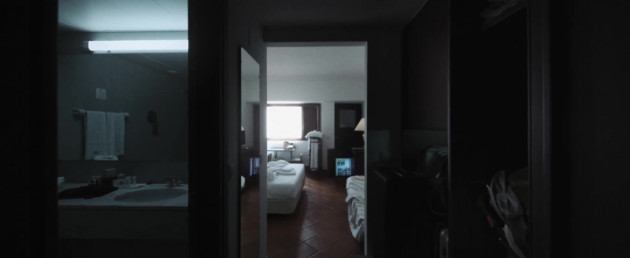
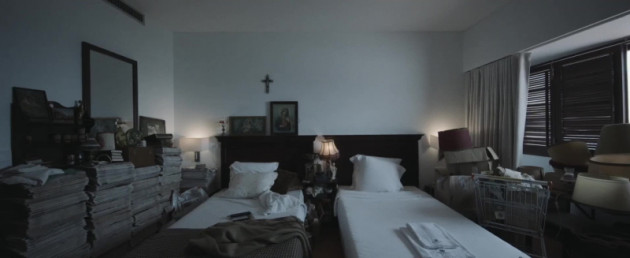
Hotel Royale
Half-way through the film the tone changes, with a heavy sense of foreboding and melancholia apparent in the voice-over and approach to the content. The VO now begins to describe things in excessive detail and begins to annotate her own descriptions (“The objects belonging to dead people are useless….The rooms are all the same. People are all the same.” “This room does not need me.”). The content of the rooms too become more ominous. One feels unused, anally tidy, except for a sniper’s rifle seen on the bed. Another is a tired mess of upturned, mutilated mattresses, another we see a male mannequin standing in the bathroom.
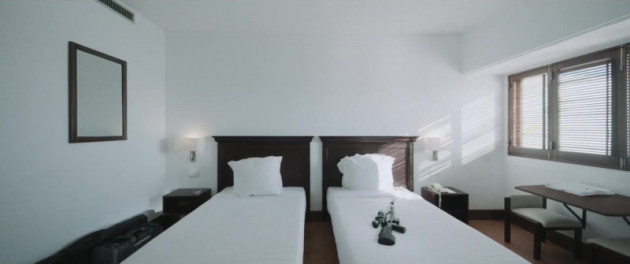
Hotel Royale
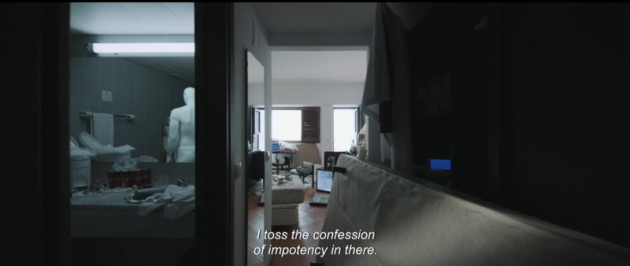
A break comes at the 22 minute mark when a room is shown without any commentary and then the VO begins to describe something that the camera is not recording, something about a child in front of a computer asking Siri ‘what is love’, while the camera tracks back along a dark corridor. The separation of image and sound is jarring, almost a shock. Then we get a wonderfully lit shot of the maid wading in the hotel’s Olympic sized pool. On Day 4 the maid is now out of her work mode, her hair down, wearing an oversized t-shirt, walking zombie like down a corridor. Surprisingly, the maid begins to dance joyously as she prances down the corridor, the score turning to a classic rendition of Satori Part 1, played (we are told in an intertitle) by the hotel’s 1930s band (another reference to The Shining?). The final image of this ‘dance scene’ of the woman stopped facing the camera at the end of the corridor is identical to one of the central images in Lawder’s noted film, Corridor.
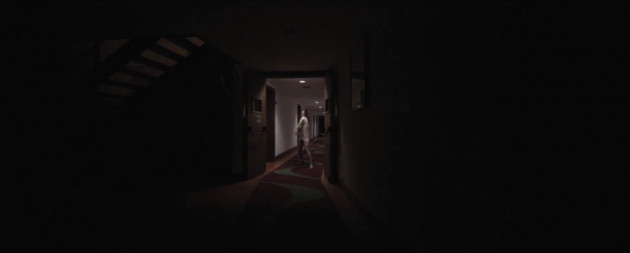
Dancing
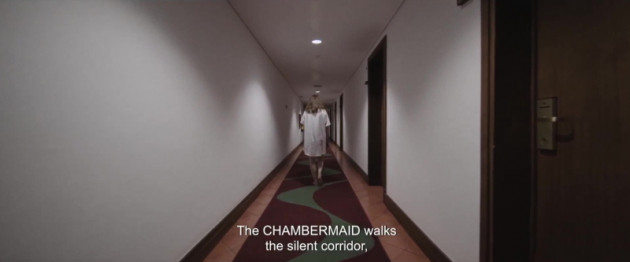
Hotel Royale
At the end the VO recounts how the chambermaid resigned at the end of the day, noting that she had lit a cigarette, which may have a correlation to the images we are seeing of a room filled with smoke. The last words we hear from the VO: “Fire fills the image. The end. Credits.” Did the chambermaid set a room on fire as a last sign of revolt? Does the film mean to engender a sense of worker revolution against mind numbing capitalist labor? A sort of Marxist call to arms against worker’s alienation? Perhaps. Hotel Royale was one of my favorite films of the festival, a bizarre yet richly textured film with a remarkable overall style that feels like a tribute to the great experimental films of the past, while remaining wholly contemporary.
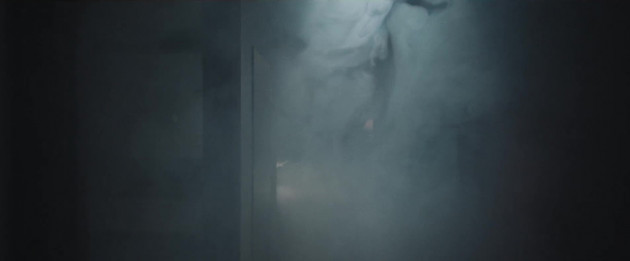
Hotel Royale



